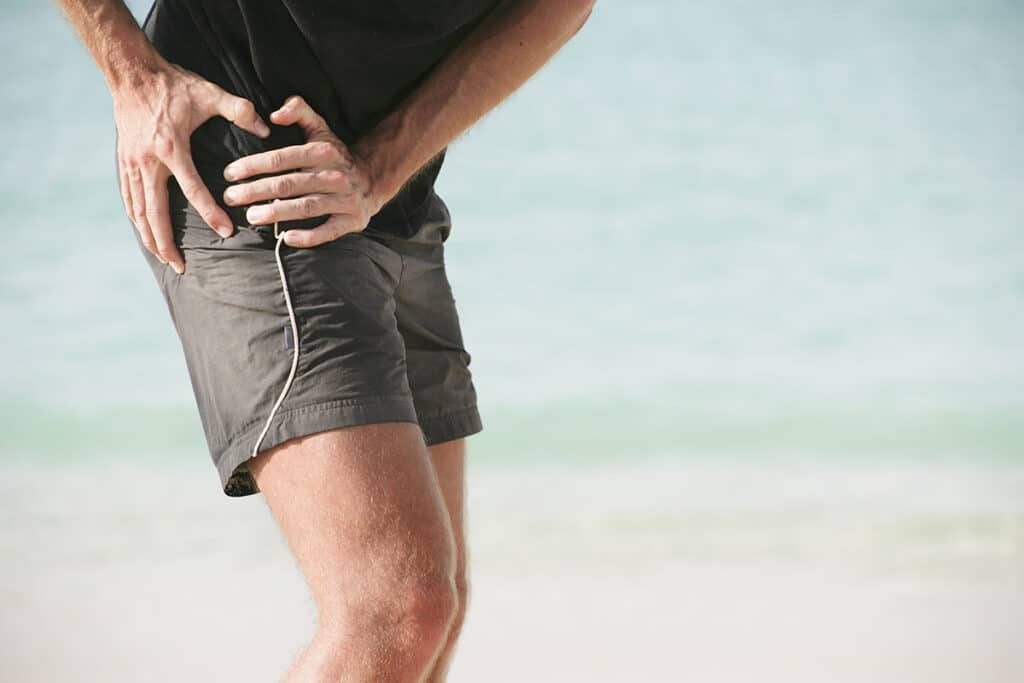
Hip flexor strains are becoming more common among people who lead a sedentary lifestyle or those who participate in activities that require repetitive or sudden movements of the hip muscles. This type of injury can be very painful and can negatively impact one’s daily life. Fortunately, there are many treatment options available to alleviate the pain and speed up the healing process. Here are 10 effective ways to treat hip flexor strains:
1. Rest: Give your hip flexors time to heal by avoiding activities that aggravate the strain. Resting allows the muscles to recover and prevents further injury.
2. Ice: Apply ice to the affected area for 15-20 minutes several times a day during the first 48-72 hours after the injury. Ice helps reduce pain, inflammation, and swelling.
3. Compression: Use a compression bandage or wrap to support the injured hip and reduce swelling. Ensure it’s not too tight to impede circulation.
4. Elevation: When resting, elevate your leg with a pillow or cushion to reduce swelling and promote blood circulation.
5. Nonsteroidal anti-inflammatory drugs (NSAIDs): Over-the-counter pain relievers like ibuprofen or naproxen can help reduce pain and inflammation. Follow the recommended dosage and consult a healthcare professional if needed.
6. Physiotherapy: A physiotherapist can develop a personalized treatment plan to strengthen and stretch the hip flexor muscles, promoting healing and preventing future strains. They may use techniques like targeted exercises, stretching, and manual treatment.
7. Massage: Massage therapy can help relax tight muscles, increase blood flow, and reduce pain. A registered massage therapist (RMT) can specifically target the hip flexor area to alleviate tension and promote healing.
8. Chiropractic care: Chiropractors can provide adjustments and manipulations to the hip joint and surrounding structures. This can help restore proper alignment, reduce pain, and improve function.
9. Heat: After the initial acute phase, applying heat to the affected area can help relax the muscles and increase blood flow, promoting healing. Use a heating pad or take warm showers or baths.
10. Gradual return to activity: Once the pain subsides and mobility improves, gradually reintroduce activities and exercises that strengthen the hip flexor muscles. Start with low-impact exercises and gradually increase intensity under the guidance of a healthcare professional.
Remember, it’s essential to consult with a healthcare professional, such as a physiotherapist or sports medicine specialist, to determine the severity of your injury and develop an appropriate treatment plan. They can provide personalized recommendations based on your specific condition.
Hip flexor strains can be a painful experience that interferes with your daily activities. However, with proper treatment and care, you can recover from this injury and regain your mobility. Rest and ice treatments are essential in the initial stages of the injury, while physiotherapy is the most effective treatment in the long term. Surgery is only recommended in severe cases, and medications are used to alleviate the pain temporarily. Home remedies can help alleviate the pain but should not be used as a substitute for medical attention. Always consult a medical professional for the best advice on treating your injury.
If you have any questions or would like to explore further, please book a free, no-charge online appointment with either myself, Nitin Nair, BPT, R/TRO DIP, PT, or another Kitchener physiotherapy practitioner at CARESPACE. We are happy to listen and are here to help!

